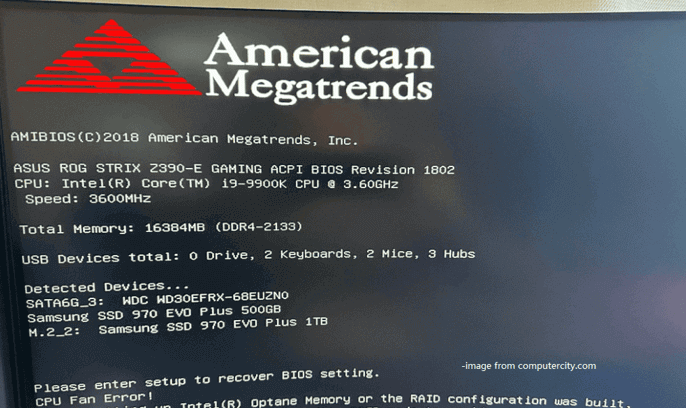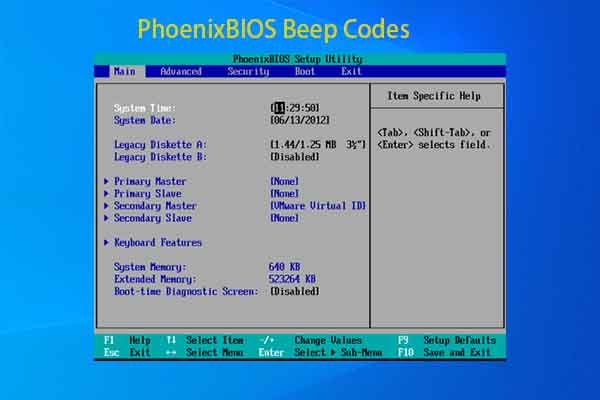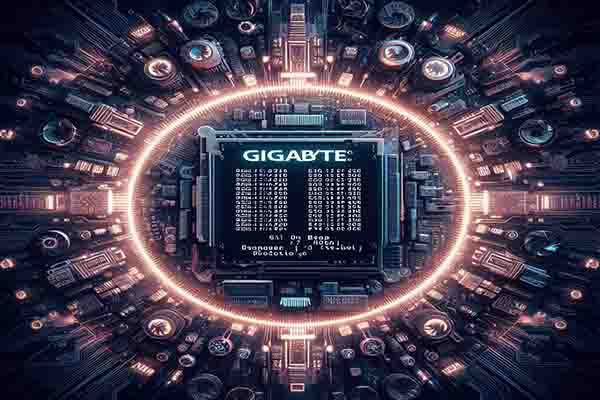AMIBIOS, manufactured by American Megatrends, is integrated to many popular motherboards by their manufacturers. Besides, some motherboard manufacturers created custom BIOS based on the AMIBIOS system.
For instance, companies like ASUS, Gigabyte, MSI, and ASRock often use AMIBIOS as a base and customize it for their motherboard, while companies like Dell, HP, and Lenovo use a custom AMIBIOS for their desktops, laptops, or servers.

However, sometimes you may experience AMIBIOS beep codes occur while starting up PCs. Generally speaking, AMIBIOS beep codes are short, sound in quick succession, and sound immediately after powering on the PC. Even so, AMIBIOS beep codes vary depending on specific situation.
MiniTool Partition Wizard DemoClick to Download100%Clean & Safe
Short AMIBIOS Beep Codes
This section summarizes frequently received short AMI BIOS beep codes ranging from 1 to 11 beeps. Besides, you can also learn the actual reason behind these beeps and troubleshooting methods for them. Detect your AMIBIOS beep code and get rid of it with the offered fixes.
- 1 short beep: It indicates there has been a memory refresh time error. If the PC is bootable, run a memory test. If not, replace the RAM. It’s time to consider replacing the motherboard if RAM replacement fails to work.
- 2 short beeps: It means that there has been a parity error in base memory. It influences the first 64KB block of memory in the RAM. You should replace the RAM modules that cause the problem.
- 3 short beeps: It means that there has been a base memory read/write test error in the first 64KB block of memory. To get rid of this AMIBIOS beep code, replace the RAM.
- 4 short beeps: It means that the motherboard timer is not working properly or there’s an issue with the RAM module. Reseat the desktop memory module and replace it if that doesn’t work. The final solution is to replace the motherboard.
- 5 short beeps: There might be a processor error. It can be caused by a damaged expansion card, the CPU, or the motherboard. You can troubleshoot the issue by replacing the expansion cards, reseating CPU, or replacing CPU. Try these operations one by one.
- 6 short beeps: There has been an 8042 Gate A20 test error. It can happen when an expansion card is failing, the motherboard is not working anymore, or there’s keyboard glitch. To fix the error, try reseating or replacing expansions cards, or replacing the motherboard.
- 7 short beeps: This suggests a general exception error. This AMIBIOS beep code results from a faulty expansion card, problematic motherboard hardware, or a damaged CPU. According to these causes, take corresponding measures.
- 8 short beeps: It means that there has been a display memory issue. This beep code usually is triggered by a faulty video card. So, simply replace the video card to fix the issue.
- 9 short beeps: It means there has been an AMIBIOS ROM checksum error and indicates there’s an issue with the BIOS chip. Since it’s impossible to replace the BIOS chip, you need to replace the motherboard entirely.
- 10 short beeps: It means that there has been a CMOS shutdown register read/write error. The beep code usually happens due to a hardware failure with the AMI BIOS chip. It can be removed by replacing the motherboard.
- 11 short beeps: It means that the cache memory test has failed. Some piece of essential failing hardware is responsible for this AMI BIOS beep code. To remove this beep code, you can directly replace the motherboard.
In this section, I will summarize frequently encountered long plus short AMIBIOS beep codes, along with their indicated meanings and solutions.
Long Plus Short AMIBIOS Beep Code
- 1 long beep and 2 short beeps: It’s an indication of a failure within the memory that’s part of the video card. To get rid of the beep code, reinstall the video card. If it fails to work, replace the video card.
- 1 long beep and 3 short beeps: This AMI BIOS beep code occurs because of a failure above the 64KB mark in the PC’s system memory. You need to replace the RAM to resolve the issue.
- 1 long beep and 8 short beeps: It means that the video adapter test has failed. You can reseat the video card or replace the video card to troubleshoot the problem.
The End
This post lists all AMIBIOS beep codes you may encounter. Based on that, it tells you what does the beep code mean, what causes the beep code, and how to fix the beep code.



User Comments :